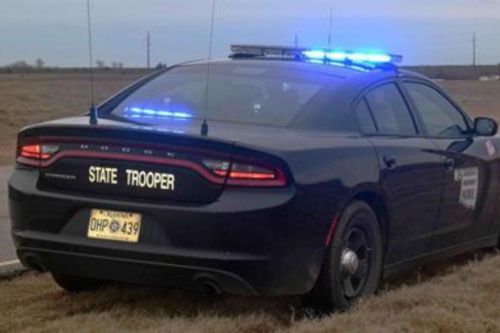L.L. was traveling north on Highway 75 through Okmulgee County, OK when he was pulled over by an Oklahoma Highway Patrol Trooper. The Trooper walked to the driver side of the vehicle L.L. was driving and witnessed L.L.’s pregnant wife and young daughter in the vehicle with him.
The Trooper claimed to smell alcohol and asked L.L. to exit the vehicle. The Trooper asked L.L. to perform the standard field sobriety tests. The standard field sobriety tests consists of the one legged stand, the walk and turn and the horizontal gaze and nystagmus (H.G.N.) tests. These three tests have been certified by the Oklahoma Board of Tests as permissible for law enforcement to administer to those suspected of DUI while on the side of the road. The Trooper did the HGN and then the one legged stand and decided that L.L. was too intoxicated to do the walk and turn field sobriety test. The Trooper also asked L.L. to take a portable breath test. The Oklahoma Board of Test does not certify the portable breath test and therefore I attempted to have the test excluded from evidence. The Court did not exclude the portable breath test. The Oklahoma Trooper arrested L.L. The entire interaction was caught on the Trooper’s dash cam. At the jury trial I was able to cross-examine the Trooper on the field sobriety tests using the video. The Trooper was forced to concede some vital points about L.L.’s ability to do some physical movements that evidence a person not under the influence of alcohol. I emphasized to the jury that it is not illegal to drink and drive and that is not illegal to drink and drive with a child in the car. (But it is a very bad idea to drink and drive with a child in the car) It is only illegal to drive while legally under the influence of alcohol. Legally speaking a person is under the influence of alcohol or drugs when their physical movements are inhibited to an appreciable degree. Simply drinking alcohol and driving is not illegal. A person’s physical movements must be inhibited to an appreciable degree. I also harped on the standard that the jury had to judge the case by. Beyond a reasonable doubt. If the jury has reasonable doubt about whether a defendant’s physical movements are inhibited to an appreciable degree then the jury must find the defendant not guilty. After six hours of deliberation the jury finally decided it could not come to a unanimous decision. The final jury count was 9 for not guilty and three for guilty. Since the defendant had a child in the car he was charged with DUI child endangerment. The defendant also had three prior felony convictions, which significantly raised the minimum and maximum sentences. The defendant was facing 4 to life in the Oklahoma Department of Corrections if found guilty. Before the trial the district attorney was offering six years in D.O.C. Since the jury hung up, in a count that was close to a not guilty, and the judge declared a mistrial the district attorney agreed to amend the felony DUI child endangerment to a misdemeanor DUI.
